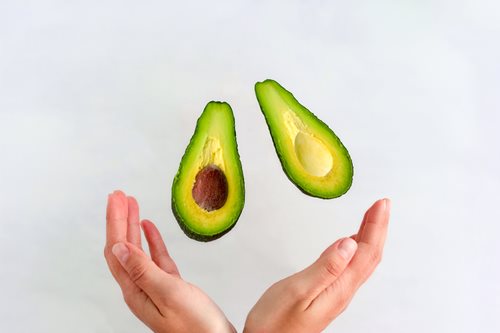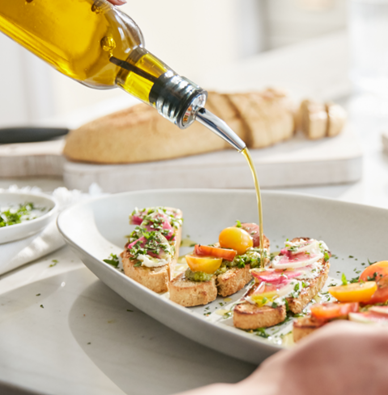Whether meal prepping for spring, summer, fall, or winter, one of the first things to decide when cooking fresh vegetables and delicious meals is which oil to use. With the variety of oil options out there, culinary confusion can happen. Here is a quick go-to guide to choosing which cooking oil best suits your cooking needs.

Algae Oil
Algae oil can be used just like any other cooking oil. With a high smoke point of 485 degrees, algae oil is an all-purpose oil that is ideal for baking, cooking, marinades, roasting, salad dressings, sautéing, searing, and stir-frying.
Kitchen Tip: Don't worry, it's not going to taste like the ocean. Algae oil has a light, neutral taste.
Avocado Oil
Avocado oil is incredibly versatile. With a light, nutty flavor, avocado oil makes for a great addition to any homemade salad or salad dressing. With a high smoke point of 520 degrees, avocado oil is best used in pan cooking (i.e. frying, searing, or stir fries).

Butter/Ghee
Whether you choose to cook with butter or ghee, both are versatile options and can be used in a variety of recipes, including baked goods or on roasted oo sautéed vegetables. With a high smoke point of 485 degrees, ghee can be used for frying or roasting at higher temperatures, while butter has a lower smoke point of 302 degrees and should be used for lower temperature cooking.
Kitchen Tip: Ghee is a form of clarified butter that contains fewer milk proteins than traditional butter and can be used in place of butter.
Macadamia Nut Oil
Macadamia nut oil has a high smoke point of 392 degrees. Similar to avocado oil, macadamia nut oil offers a lovely nutty flavor and is best used in salads or for low temperature cooking like sautéing and stir frying.
Kitchen Hack: Macadamia nut oil gives baked goods an added touch of nutter goodness, but don't worry, it's very subtle and not too strong like other oil options.
Organic Extra Virgin Olive Oil
Cold-pressed to retain its full flavor, extra virgin olive oil is a pantry staple. Most popular to use on salads, salad dressings, and dips. EVOO has a low smoke point of 374 degrees, so it should only be used raw or to cook at very low temperatures.
Kitchen Tip: EVOO pairs perfectly with Balsamic Vinegar. Drizzle both on a bed of fresh farmers market greens or use to sauté vegetables and enjoy a savory snack.

Organic High-Oleic Sunflower Oil
Organic Sunflower Oil has a high smoke point of 440 degrees, making it ideal to use in baking, deep-frying, grilling, pan-frying, sautéing, stir frying, and roasting. With a mild flavor, Organic High-Oleic Sunflower Oil can even be used to make homemade salad dressings.
Fun Fact: We use Organic High-Oleic Sunflower Oil in our almond flour crackers and sprouted seed crackers.
Organic Virgin Coconut Oil
Unrefined & cold-pressed, organic virgin coconut oil is incredibly versatile. With a high smoke point of 350 degrees, organic virgin coconut oil is best used for baking, pan frying, roasting or sautéing. It’s important to note that coconut oil can potentially add a sweet hint of coconut to your dish, so use it selectively.
Kitchen Tip: Unrefined coconut oil has a sweet, soft aroma with a more pronounced coconut flavor, but if you don’t care for the taste of coconut opt for refined coconut oil instead.
When it comes to choosing the best cooking oil, look for oils that are lightly processed, occur naturally and are stable. This means avoiding refined oils like canola oil, corn oil, safflower oil and sunflower oil. Also, keep in mind the oil’s smoke point and if it will suit your preparation method (frying, sautéing, slow roasting). Happy cooking!
Tag us @SimpleMills so we can see your favorite oils to use when baking or cooking.